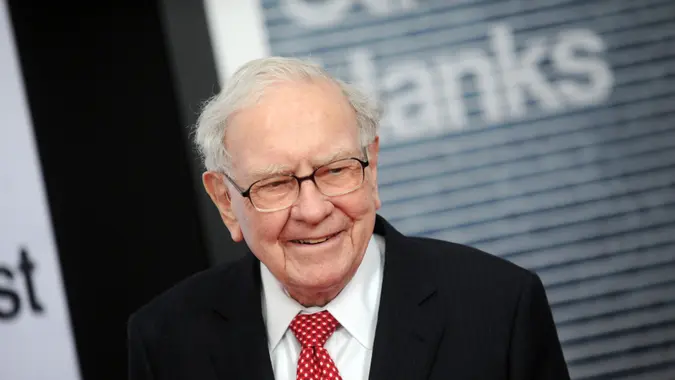I Asked ChatGPT How the Latest Trump Tariff News Could Impact My Wallet: Here’s What It Said

Commitment to Our Readers
GOBankingRates' editorial team is committed to bringing you unbiased reviews and information. We use data-driven methodologies to evaluate financial products and services - our reviews and ratings are not influenced by advertisers. You can read more about our editorial guidelines and our products and services review methodology.

20 Years
Helping You Live Richer

Reviewed
by Experts

Trusted by
Millions of Readers
President Donald Trump’s planned additional 100% tariff on Chinese imports are set to take effect on Nov. 1, per Reuters. However, as CNBC noted, the president plans to meet with President Xi Jinping “as the world’s top two economies seek to dial down tensions in search for a trade deal.”
Many American consumers are likely wondering how their finances might be impacted if the tariffs were to go into effect in November.
Enter ChatGPT, with its own slew of concise and targeted takes on how the president’s latest trade policy could end up costing consumers a bit more at the checkout counter.
New China Tariffs From Trump Could Cause a Variety of Items To Increase in Price
ChatGPT was quick to point out that items in a number of different consumer categories that are primarily sourced from China (from toys to textiles) could see substantial price increases as a result of the latest round of tariffs.
“Day-to-day goods with large China exposure (toys/sporting goods, footwear, electronics, textiles) are most sensitive; even small percentage hikes show up on store shelves,” ChatGPT noted.
Tariff Issues Remain Somewhat Muted in Other Categories
However, pulling data from Yale’s Budget Lab, ChatGPT noted that the average effective tariff rate rested at 10% in June, and an expected 10% and 11.5% in July and August, respectively. Core goods prices were 1.9% above the pre-2025 trend as of June, although electronics and other categories outpaced this figure.
Overall, the cost of the tariffs has largely been downloaded to the consumer, with middlemen and retailers of all stripes absorbing only some of the impact.
“Recent evidence suggests ~60%-80% of new tariff costs have been passed into consumer goods prices in 2025. Use 70% as a middle-case when translating policy headlines into grocery-cart costs,” ChatGPT highlighted.
On the other hand, as Yale’s Budget Lab noted, the dollar has shed 7% of its value since December, contrary to prevailing wisdom on tariff enactment, meaning your dollar doesn’t have the purchasing power it once did.
ChatGPT’s Math on Trump’s New China Tariffs
Finally, ChatGPT provided an estimate on how much the stated additional tariffs might cost the average U.S. consumer, assuming a baseline spend of $77,280 (derived from 2023 Bureau of Labor Statistics figures) and a 13% to 14% share of Chinese goods imported (per UCLA data), as well as the aforementioned pass-through rate to shoppers provided by Yale’s Budget Lab.
For a middle-case scenario, ChatGPT estimated an increased cost of $1,560 per household, per year, while also taking into account retailer discounts and substitutions. Meanwhile, it estimated a high-exposure case of $2,400 to $3,000 in increased costs annually.
Ultimately, these are merely estimates from ChatGPT, and consumers will have to wait to see what the outcome of these latest tariffs will be.
Editor’s note on political coverage: GOBankingRates is nonpartisan and strives to cover all aspects of the economy objectively and present balanced reports on politically focused finance stories. You can find more coverage of this topic on GOBankingRates.com.
More From GOBankingRates
- Nearly 1 in 3 Americans Hit by a Costly Holiday Scam, Norton Survey Shows -- How To Avoid This
- Here's What the Average Social Security Payment Will Be in Winter 2025
- How Middle-Class Earners Are Quietly Becoming Millionaires -- and How You Can, Too
- The Easiest Way to Score $250 for Things You Already Do
 Written by
Written by  Edited by
Edited by 

























